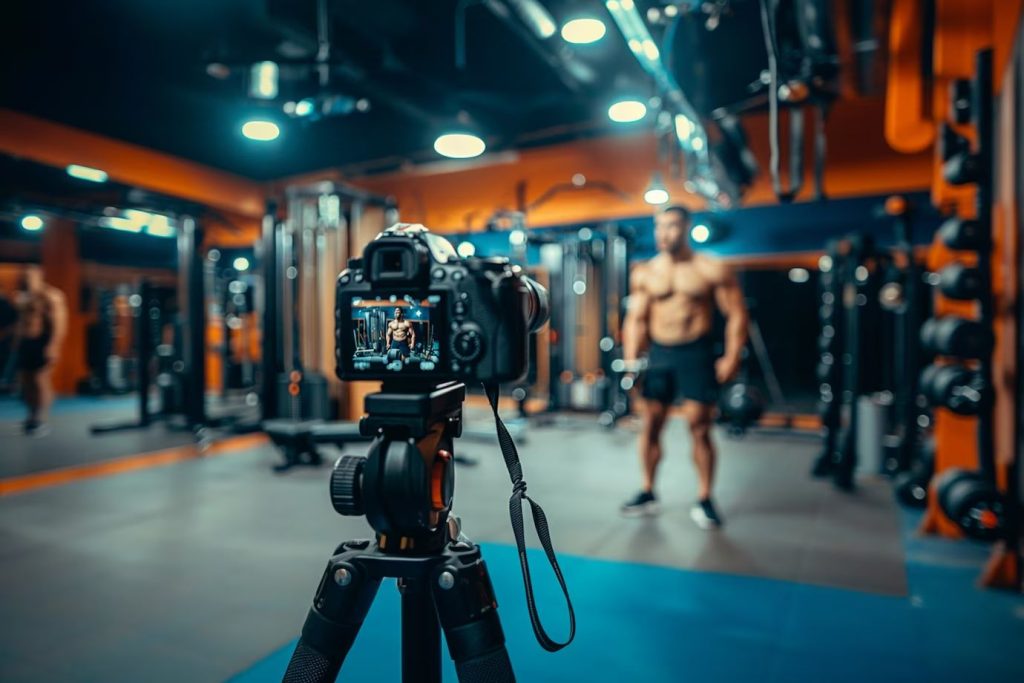I. Introduction
A. Overview of Video Testimonials and Case Studies
Video testimonials and case studies have become powerful tools in the world of marketing. In an age where consumers are bombarded with information, video stands out as a compelling medium. These videos help businesses showcase their success stories through the voices of real customers, which adds a layer of authenticity and trustworthiness that’s hard to achieve with text alone.
By putting a face and voice to your success stories, you create a more relatable and convincing message. This kind of content not only highlights the benefits of your products or services but also makes your brand seem more credible. After all, seeing someone else’s positive experience can be incredibly persuasive for potential customers.
B. Objectives of the Video
The aim of this guide is to break down the process of creating impactful video testimonials and case studies. We’ll walk through why they’re important, how to film and produce them effectively, and the best ways to use them to boost your brand’s reputation. Whether you’re just starting out or looking to refine your approach, this guide has you covered.
II. The Importance of Video Testimonials

A. Building Trust and Credibility
In the world of marketing, trust is everything. When potential customers are considering a purchase, they often look for social proof to help them make their decision. Video testimonials provide that proof in a dynamic way. According to recent studies, video testimonials can significantly increase trust in a brand. When consumers see real people sharing their positive experiences, it feels more genuine compared to written reviews.
Video testimonials are more than just a visual representation of a satisfied customer. They offer an emotional connection that written text often lacks. For example, a video of a customer enthusiastically describing how your product solved their problem can be far more compelling than a few lines of text. This emotional element can be the key to converting potential leads into loyal customers.
B. Enhancing Engagement
Engagement is another area where video testimonials shine. People are naturally drawn to videos; they’re easier to consume than long blocks of text. In fact, video content often gets higher engagement rates across social media platforms compared to other types of content. A well-made video can grab attention quickly and keep viewers engaged throughout.
Moreover, video testimonials often lead to higher retention rates. Viewers are more likely to remember and recall the message delivered in a video, which helps reinforce your brand’s message in their minds. This means that not only are your testimonials being seen, but they’re also being remembered, which is crucial for long-term brand recognition.
III. How to Film Compelling Customer Testimonials
A. Preparation
1. Selecting the Right Customers
Choosing the right customers to feature in your testimonials is crucial. Look for customers who have had a particularly positive experience with your product or service and are enthusiastic about sharing their story. Ideally, they should have a story that resonates with your target audience. A customer who has seen significant results or has a compelling narrative can make your testimonial much more powerful.
Once you’ve identified these customers, reach out to them with a friendly invitation to participate. Explain how their story could help others and offer to make the process as easy and convenient as possible. Being upfront about what’s involved will make them more comfortable and willing to take part.
2. Preparing Your Questions
The key to a great testimonial is asking the right questions. Prepare a list of open-ended questions that encourage detailed responses. For example, instead of asking “Did you like our product?”, try “Can you describe how our product helped you?” This approach will elicit more in-depth and genuine responses. Avoid leading questions that might prompt the customer to say what you want to hear. The goal is to capture their authentic experience.
3. Setting Up the Filming Environment
A well-chosen filming location can make a huge difference. Aim for a place that’s comfortable and free from distractions. Good lighting is essential—natural light is often the best, but if that’s not possible, use soft, diffused artificial lighting to avoid harsh shadows. Ensure the background is tidy and not too cluttered; the focus should remain on the interviewee. Also, consider the sound quality. A quiet environment is key to clear audio, so choose a location away from noisy areas.
B. Filming Techniques
1. Equipment and Setup
You don’t need a Hollywood budget to create high-quality video testimonials, but having the right equipment helps. A decent camera with HD or 4K capabilities, a good microphone, and proper lighting will go a long way. If you’re filming on a smartphone, use a tripod to keep the video steady and ensure the camera is positioned at eye level for a more engaging look. Check your equipment beforehand to avoid any surprises on the day of filming.
2. Interviewing Tips
During the interview, your role is to facilitate a natural conversation. Encourage the interviewee to speak freely and share their genuine feelings. Be supportive and patient; give them time to gather their thoughts and answer fully. Use non-verbal cues like nodding or smiling to show engagement. If they struggle to answer, gently prompt them with additional questions or examples. The goal is to make them feel relaxed and open, so their testimonial feels authentic and heartfelt.
3. Visual and Audio Quality
High-quality visuals and audio are essential for a professional-looking testimonial. Avoid common issues such as poor lighting or background noise by double-checking your setup before you start. Clear, crisp audio is crucial, so use a good microphone and monitor the sound levels throughout the recording. If possible, do a test run to ensure everything looks and sounds just right before filming the final version.

IV. Producing Effective Case Study Videos
A. Structuring the Case Study
1. Introduction
Start your case study video with a brief introduction that sets the stage. Introduce the customer and give a quick overview of their business or situation. This helps viewers understand the context and why the case study is relevant. Keep it concise and engaging to capture the audience’s attention right from the start.
2. The Challenge
Dive into the core problem or challenge that the customer faced. Be specific about the issues they were experiencing and why it was a significant concern. This section should clearly outline the problem to make it relatable for viewers who might be facing similar issues.
3. The Solution
Next, explain how your product or service provided a solution. Highlight the features or aspects of your offering that addressed the customer’s challenge. This is where you show the value of your product or service in action. Use concrete examples and avoid jargon to make it easy for viewers to understand.
4. The Results
Share the outcomes or benefits the customer experienced after using your product or service. Quantify the results if possible, using metrics or data that demonstrate the impact. For example, “Since using our software, the customer increased their sales by 30%.” This concrete evidence helps reinforce the effectiveness of your offering.
5. Conclusion
Wrap up the case study with a brief recap of the success story. Reinforce the key points and highlight the customer’s satisfaction. End with a call to action, inviting viewers to learn more about your product or service or to get in touch for a consultation. This helps convert interest into action and keeps the momentum going.
B. Editing and Post-Production
1. Crafting a Compelling Narrative
Editing is where your case study comes together. Focus on creating a coherent and engaging story by cutting out any irrelevant or redundant footage. Ensure the narrative flows smoothly from one section to the next, keeping viewers engaged throughout. Add transitions and effects sparingly to maintain a professional look.
2. Incorporating Branding Elements
Incorporate your brand’s colours, logo, and other visual elements to maintain consistency and reinforce brand recognition. Subtle branding helps keep the focus on your business while enhancing the video’s overall appeal. Use these elements to enhance the video’s professional quality without overwhelming the content.
3. Adding Visuals and Graphics
Enhance your video with on-screen text, graphics, and statistics to underscore key points. Visuals can help clarify complex information and make the video more engaging. Ensure that any graphics or text are clear and easy to read, and that they complement the spoken content rather than distracting from it.
4. Reviewing and Finalising
Before finalising your video, review it thoroughly to catch any errors or issues. Get feedback from colleagues or a small test audience to ensure it resonates well. Make any necessary adjustments based on this feedback to improve the final product. A polished, well-reviewed video will make a much stronger impression.
V. Leveraging Video Testimonials and Case Studies
A. Distribution Channels
Once you’ve created your video testimonials and case studies, it’s time to share them with the world. Distribution is key to getting your videos seen by your target audience. Here’s how to make the most of your content:
1. Your Website
Your website is the central hub for your content. Create a dedicated section or page for video testimonials and case studies. This makes it easy for visitors to find and watch these videos, which can help build credibility and trust. Embed the videos directly on the page to keep visitors engaged without having to leave your site.
2. Social Media
Social media platforms are perfect for reaching a broader audience. Share your videos on channels like Facebook, LinkedIn, and Twitter to increase visibility. Tailor your posts to each platform’s audience and include engaging captions or snippets to encourage views. For instance, on LinkedIn, focus on professional insights, while on Facebook, highlight customer stories and achievements.
3. Email Campaigns
Incorporate your video testimonials and case studies into your email marketing strategy. Embed the videos or include a compelling call to action with a link to the full video. Personalised emails that showcase relevant case studies can be particularly effective in nurturing leads and maintaining customer relationships.
4. Video Platforms
Platforms like YouTube and Vimeo are great for hosting and sharing your videos. Create a branded channel and organise your content into playlists for easy navigation. Optimise your video titles, descriptions, and tags with relevant keywords to improve searchability and attract organic traffic.
B. Measuring Impact
To ensure your video content is effective, you need to track its performance. Measuring the impact of your videos helps you understand what’s working and where there’s room for improvement.
1. Key Metrics to Track
Start by monitoring key metrics such as views, watch time, and engagement rates (likes, comments, and shares). These numbers give you a sense of how well your videos are resonating with your audience. Additionally, track click-through rates and conversion rates to see if your videos are driving the desired actions, like signing up for a newsletter or making a purchase.
2. Using Analytics
Leverage analytics tools provided by video platforms and social media channels to dive deeper into performance data. Look for trends and patterns that indicate which types of content are most effective. For example, if you notice higher engagement with videos featuring customer success stories, you might want to produce more of that type of content.
3. Gathering Feedback
Don’t forget to ask for direct feedback from your audience. This could be through surveys or informal conversations with viewers. Understanding their perspectives can provide valuable insights into what they find appealing or what might need improvement. Use this feedback to refine your video strategy and create content that better meets your audience’s needs.
VI. Conclusion
A. Recap of Key Points
Let’s summarise the key takeaways from our guide. Video testimonials and case studies are powerful tools for building trust and engaging your audience. By selecting the right customers, preparing thoughtful questions, and setting up your filming environment properly, you can create compelling videos that highlight the real-world benefits of your product or service.
Effective video production doesn’t end with filming; the editing process is crucial for crafting a coherent and professional final product. Once your videos are ready, distributing them through various channels and measuring their impact will help you maximise their effectiveness and reach.
B. Call to Action
Now that you have a solid understanding of how to create and leverage video testimonials and case studies, it’s time to put these insights into action. Start planning your next video project and use the tips provided to produce high-quality content that showcases your brand’s successes. If you need further assistance or resources, don’t hesitate to reach out for support or professional services to help you get started.
C. Real-World Example
Here at The Magnificent Itch, we’ve recently implemented these strategies for our client, Applied Motion, Wembley’s most trusted expert physiotherapists. We used these techniques to help them create compelling video testimonials and case studies that truly reflect their expertise and success. By focusing on their clients’ genuine experiences and showcasing the tangible results they’ve achieved, we’ve been able to highlight Applied Motion’s exceptional service in a way that resonates deeply with potential customers.
If you’re looking for a way to enhance your video content and see real results, consider how these approaches could work for your business. Reach out to us to learn more about how we can help you achieve similar success.
VII. Q&A and Additional Resources
A. Address Common Questions
Many people have questions when it comes to creating video testimonials and case studies. Here are a few common ones:
1. How long should a video testimonial be? Aim for 1-2 minutes. This length is usually enough to convey the key points without losing viewers’ attention.
2. What’s the best way to approach customers for testimonials? Be straightforward and explain how their story could benefit others. Offering to make the process as easy as possible can also encourage participation.
3. Can I use customer testimonials in ads? Yes, with the customer’s permission, video testimonials can be a powerful addition to your advertising efforts. Just ensure that they’re used in a way that aligns with the customer’s original message and consent.
B. Provide Additional Resources
For further reading and tools to help with video production, consider exploring the following resources:
1. Video Editing Software
- Adobe Premiere Pro – A professional-grade video editing tool.
- Final Cut Pro – Ideal for Mac users seeking advanced editing capabilities.
- DaVinci Resolve – A free option with powerful editing features.

2. Filming Equipment
- Canon EOS M50 – A versatile camera for high-quality video.
- Rode VideoMic Pro – A great microphone for clear audio.
- Neewer Ring Light – Affordable lighting to enhance your video quality.
3. Online Courses and Tutorials
- Udemy – Offers various courses on video production and editing.
- YouTube Creator Academy – Free tutorials on improving your video content and channel performance.
By leveraging these resources and applying the tips from this guide, you’ll be well on your way to creating impactful video testimonials and case studies that can significantly enhance your marketing efforts.

With a professional journey spanning 15 years, Ciara Rowena has established herself as a versatile powerhouse in the Australian media landscape. Her academic background, including a Bachelor of Communications with a double major in Public Relations and Journalism, provides her with a unique dual perspective on how content is both produced and promoted.
Ciara’s expertise lies in the strategic alignment of content across multi-channel ecosystems. She has successfully led campaigns that integrate long-form editorial content with social media storytelling and email marketing, resulting in measurable community growth and brand loyalty. Beyond the technical metrics, Ciara is a passionate advocate for “conscious content”. The idea that digital media should serve to empower and educate rather than simply occupy space. Her portfolio includes extensive work in the fields of mental health advocacy, sustainable living, and female entrepreneurship. Based in Perth, she continues to consult for agencies and publications that value integrity, creativity, and the power of a well-told story.
